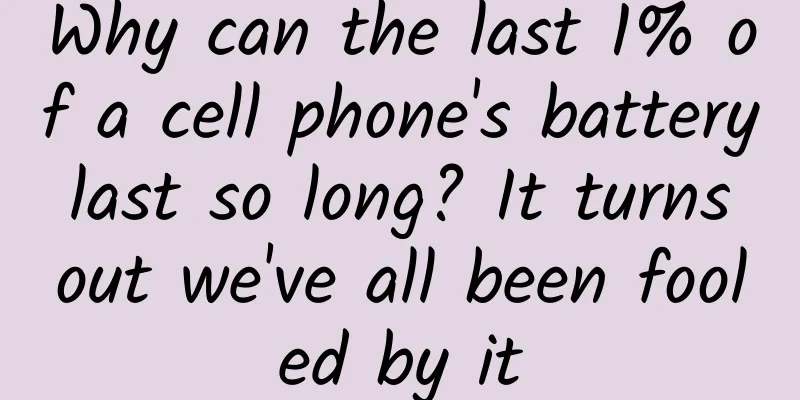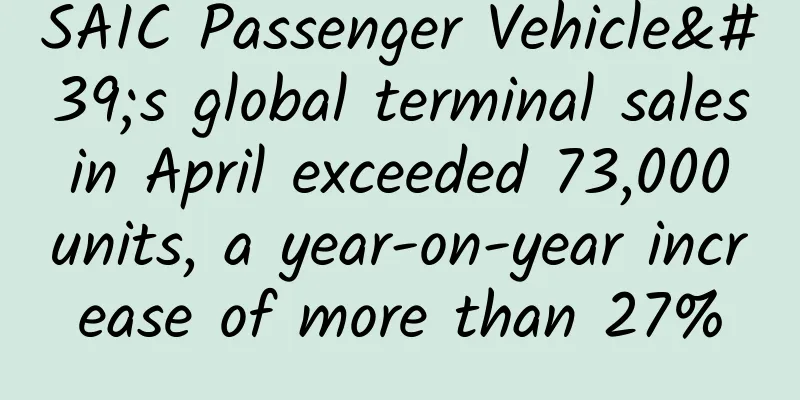Why can the last 1% of a cell phone's battery last so long? It turns out we've all been fooled by it

|
If someone around you is playing with his phone and suddenly stands up screaming and rushes to the charger like crazy, he is likely to be a Huawei user, and the countdown of "30 seconds to battery death" is displayed on his phone screen. "30-second countdown" is a function that pops up on Huawei phones when the battery level reaches 2%. If the charger is not plugged in within 30 seconds, the phone will automatically shut down. Image source: Mobile screenshot But if you are an Apple phone user, the situation is quite different. When the battery is at 1%, you can calmly reply to a few messages, slowly take out the charging cable, and calmly plug it into your phone. Copyright images in the gallery. Reprinting and using them may lead to copyright disputes. Why does the last 1% of battery on an Apple phone last so long, while the last 2% of battery on a Huawei phone can only last for 30 seconds? In fact, this is a misunderstanding. The remaining power displayed on the mobile phone is not the accurate remaining battery power . To clarify this, we must first talk about the mobile phone power. How does a cell phone know how much battery is left? We all know that the reason why mobile phone batteries can supply power is due to the chemical reactions that occur in the battery. In theory, we can accurately know how much power is left by measuring how much reactant is left . So the remaining battery power displayed on the phone is actually an estimated value. There are many battery parameters that need to be tested for mobile phones. Here we mainly introduce two parameters related to the estimation of the remaining power of the mobile phone. Voltage If you search for mobile phone batteries online, you may see a parameter marked on many batteries - standard voltage (also written as "nominal voltage"). This voltage is generally around 3.7V, but in fact, the lithium batteries in mobile phones do not output this voltage steadily from beginning to end when working . The standard voltage marked on lithium batteries (Image source: screenshot from an online store) For example, this picture shows the voltage change of a certain type of lithium battery during the discharge process. At the beginning of discharge, the voltage is close to 4.2V, and when the battery is about to finish discharging, the voltage drops rapidly. Discharge voltage change of a certain type of lithium battery, Image source: Reference 1 Therefore, the mobile phone can also determine the amount of power by detecting the change in the internal battery voltage . For example, the battery voltage can be defined as 4.2 V as fully charged, that is, 100%, and 3.3 V as exhausted, that is, 0%. At this time, the mobile phone will automatically shut down (generally, mobile phones rarely use the battery voltage to 3 V). Based on this curve, the phone can show us the remaining power. This method sounds simple and straightforward, but there are some problems. The most obvious problem is that the voltage drop during use is not a linear process . It can be seen from the curve in the figure that when the battery is almost exhausted, the battery voltage drops faster. If it is strictly displayed according to this curve, the battery power may suddenly drop from 15% to 0%, which may cause a lot of trouble. However, this problem is relatively easy to solve, as long as the displayed data is corrected. In addition, judging the power level by voltage alone will face another problem, that is, it will be affected by many factors . For example, under different working current conditions, the voltage drop curve is also different . Under different working current conditions, the battery discharge curve is different, which we call rate performance. The following picture shows the battery voltage drop under different rate conditions. Battery voltage changes under different rate conditions, Image source: Lithium-ion Battery DATA SHEET, Battery Model: LIR18650 2600mAh (EEMB Co., Ltd.) If you are chatting on your phone, the battery current is relatively low, and the remaining power estimated based on the current situation may be too high. When you open a mobile game, the current will increase, and after the phone re-estimates, it will find that the remaining power is not that high, and the displayed power may change. Therefore, in addition to detecting the battery voltage, the mobile phone may also need to detect other parameters . Charge There is a thing called a coulomb counter in the built-in chips of many mobile phones, which can help the phone judge the remaining power more accurately. Although many people have already returned their high school electrical knowledge to their physics teachers, I believe everyone is familiar with the unit of "milliampere-hour". After all, the capacity of mobile phone batteries is measured in milliampere-hours (mAh). Generally speaking, the larger the milliampere-hour, the more charge can be stored. The "coulomb" in the name of the "coulomb meter" is also a unit of charge. The coulomb meter can detect how much charge the battery has released during use. Subtract the amount of charge that has been consumed from the amount of charge that the battery can store to know how much power is left . With the help of the coulomb meter, the phone can also make a more accurate prediction of the power level, but even so, there will still be errors. Therefore, the remaining power we see is only an estimate, not an exact value. Product Considerations Since there will be errors in predicting mobile phone battery life, different mobile phone manufacturers will have their own considerations. For example, some manufacturers may consider that since the battery power estimation is not so accurate, they may simply let the phone display 1% as early as possible . This way, users can charge their phones as early as possible to avoid unnecessary trouble. Moreover, when the battery is running out, many mobile phones will automatically enter low-power mode, lower the screen brightness, and stop running unimportant background programs, all of which will make the last 1% more durable. Image source: Mobile screenshot Some manufacturers have adopted a strategy of letting you sprint to the charger for 30 seconds when the battery reaches 2%. Therefore, Apple's 1% battery can last for a long time, while Huawei's 2% can only last for 30 seconds. They are not comparable, and it cannot be said that one has a longer battery life. Emergency mode below 1% battery Although Huawei's "30 seconds of death" looks scary, when the Mate 50 was released in September 2022, Huawei also added a "energy pump" technology, which allows the phone to enter emergency mode instead of shutting down directly after the 30-second countdown. In emergency mode, you can still talk for more than ten minutes and perform several code scanning operations to solve urgent problems. When this technology first appeared, some people thought it was not a new technology, but that the phone was deliberately hiding some of the power. But then, more and more reviews appeared, and it was found that the phone was not hiding the power . The test found that the voltage of general Android phones cannot maintain normal operation at around 3.3 V and can only shut down automatically. The "energy pump" technology can continue to power the phone at low voltage after the battery voltage drops below 3.3V, squeezing out the last bit of power from the battery for emergency use. This also alleviates the tension brought by the "30 seconds of death" countdown, and also gives Huawei a point for the "durability" of the last 2% of power. But then again, for the sake of battery health, it is not recommended that you use your phone until it is out of power before charging it. You can charge your phone when the battery is about 50% used. Want to know more about mobile phone charging? Click here to check it out → (The battery can only be charged 500 times? Don’t be ridiculous! This real charging secret is recommended for collection) References [1]https://www.richtek.com/Design%20Support/Technical%20Document/AN024 [2]Lithium-ion Battery DATA SHEET ,Battery Model: LIR18650 2600mAh (EEMB Co., Ltd.) [3] Review video: https://www.bilibili.com/video/BV1b84y117yr/?vd_source=4de26bbe48ce5be01ed7193227fe526f Planning and production This article is a work of Science Popularization China-Starry Sky Project Produced by Science Popularization Department of Science Popularization China Producer: China Science and Technology Press Co., Ltd., Beijing Zhongke Xinghe Culture Media Co., Ltd. Author: Science Scraps Popular Science Team Review | Zhou Xiaoliang, Senior Engineer, Physics Laboratory, Beijing Jiaotong University Planning丨Fu Sijia Editor: Fu Sijia |
Recommend
Apple cracks down on ranking manipulation: Taiwan removes apps with built-in points wall
According to reliable sources, Apple Taiwan has r...
Losses! Layoffs! Bankruptcy! The film and television industry is not for everyone
As a winner of Toutiao's Qingyun Plan and Bai...
Physical stores doing private domain community marketing? 7 ways to tell you!
When doing store customer development activities,...
CHJ Automotive's Li Xiang praises AutoPilot. Is Tesla's autonomous driving really reliable?
Recently, Li Xiang said: "The new version of...
The information flow customer acquisition cost of this industry has been exposed! Take a look
Since the second half of 2016, traditional home f...
Plagiarism aside! Is the 899-yuan Xiaomi air purifier worth buying?
Xiaomi seems to always be associated with "i...
Dandruff and hair loss, what's wrong with our scalp?
I don’t know if you who are busy every day have e...
Is eating animal organs harmful to health? Can you eat them safely? Today I will tell you the truth...
This article was reviewed by Pa Li Ze, chief phys...
How much commission can you get by selling products on the Douyin platform? Introduction to Douyin's commission calculation and withdrawal methods
The development of short videos has been particul...
Humans can see these "little guys" only because of this group of obsessive compulsive disorder
The human eye can only distinguish about 0.1 mm. ...
Is there anything we can learn from Japanese companies now that they have fallen from their pedestal?
Once upon a time, the distinctive characteristics...
How much does it cost to invest in the Hailar Furniture Mini Program?
How much does it cost to attract investors for th...
In addition to space junk, they also threaten spacecraft!
Not long ago, NASA, ESA and the Canadian Space Ag...
"Life-extending magic weapon" may also be a "weapon of harm"? These 9 types of people should drink less coffee!
For modern people, coffee has gradually become a ...









